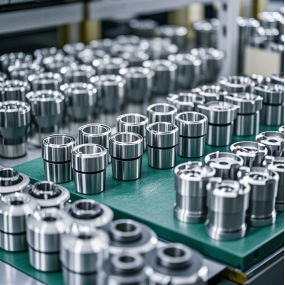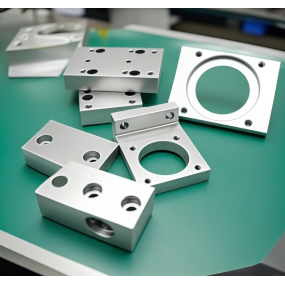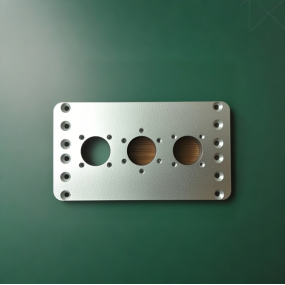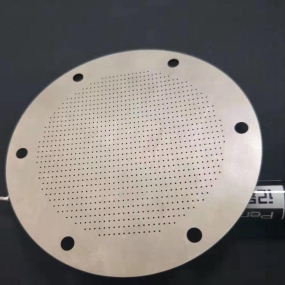Sheet metal parts have obvious advantages such as strength, weight and cost, and at the same time have better point-to-point performance than traditional parts. Sheet metal parts have been gradually applied in high-tech fields such as electronic communication, and people have gradually put forward higher requirements for the quality and function of sheet metal parts. Appropriate optimization of the original sheet metal parts processing technology has become the focus of the research of Sheet Metal Processing personnel. The application of the four basic cold processing links in sheet metal parts processing starts with the optimization of the processing technology one by one. First of all, under normal circumstances, blanking refers to the separation of sheet metal through the die of the die. This link is usually used in the processing of parts with relatively simple shapes to achieve a higher degree of processing accuracy while reducing material waste to a greater extent. First of all, the shape of the punched sheet metal parts should be controlled. In the corner area of the external and inner holes of the punching and cutting, the angle should be set in a circular way to avoid sharp angles and reduce the problem of mold cracking caused by improper subsequent heat treatment, which affects the subsequent sheet metal construction. The bending process refers to the prevention and control of sheet metal materials on the bending equipment. The elastic deformation of the sheet metal material occurs through the pressure of the upper or lower die, and the plastic deformation occurs according to the actual design scheme after the elastic deformation occurs. According to the actual design requirements, different parts should be selected to set the size. In the bending process, local abnormal deformation is prone to occur, which in turn affects the appearance quality and actual application of the sheet metal parts. To optimize the process for the bending process, the operator should make a pre-incision according to the actual situation, so as to avoid the problem of subsequent deformation. The riveting process of sheet metal parts refers to the deformation of the sheet metal material through the action of pressure, which makes the sheet metal material deform and then couple it together. This process is usually applied in the process of screw riveting, bolt riveting and other links. As for the riveting operation of the curtain, the nut is usually round and has an embossed gear and wire notch. Therefore, the riveting process for sheet metal parts not only optimizes the quality of the original nut production process, but also avoids the welding work. The welding process is one of the important ways to connect the various parts of the structure together in the cold work process of the whole sheet metal parts, so it is usually placed in the background of high temperature for operation. Common welding methods are carried out by contact spot welding with argon arc welding. Therefore, in the actual welding process, different welding methods should be selected according to the properties of different sheet metal parts to ensure the reduction of welding deformation to a large extent and improve the actual efficiency of welding. In the actual welding process, first of all, it is necessary to determine the sufficient welding control left. Secondly, it is necessary to control the length of the welding part more accurately to avoid the appearance of sheet metal out-of-shape and optimize the load of the welding point.
Hello! Welcome to EMAR's website!
 English
English » »
» »
 Spanish
Spanish Arabic
Arabic French
French Portuguese
Portuguese Belarusian
Belarusian Japanese
Japanese Russian
Russian Malay
Malay Icelandic
Icelandic Bulgarian
Bulgarian Azerbaijani
Azerbaijani Estonian
Estonian Irish
Irish Polish
Polish Persian
Persian Boolean
Boolean Danish
Danish German
German Filipino
Filipino Finnish
Finnish Korean
Korean Dutch
Dutch Galician
Galician Catalan
Catalan Czech
Czech Croatian
Croatian Latin
Latin Latvian
Latvian Romanian
Romanian Maltese
Maltese Macedonian
Macedonian Norwegian
Norwegian Swedish
Swedish Serbian
Serbian Slovak
Slovak Slovenian
Slovenian Swahili
Swahili Thai
Thai Turkish
Turkish Welsh
Welsh Urdu
Urdu Ukrainian
Ukrainian Greek
Greek Hungarian
Hungarian Italian
Italian Yiddish
Yiddish Indonesian
Indonesian Vietnamese
Vietnamese Haitian Creole
Haitian Creole Spanish Basque
Spanish Basque











